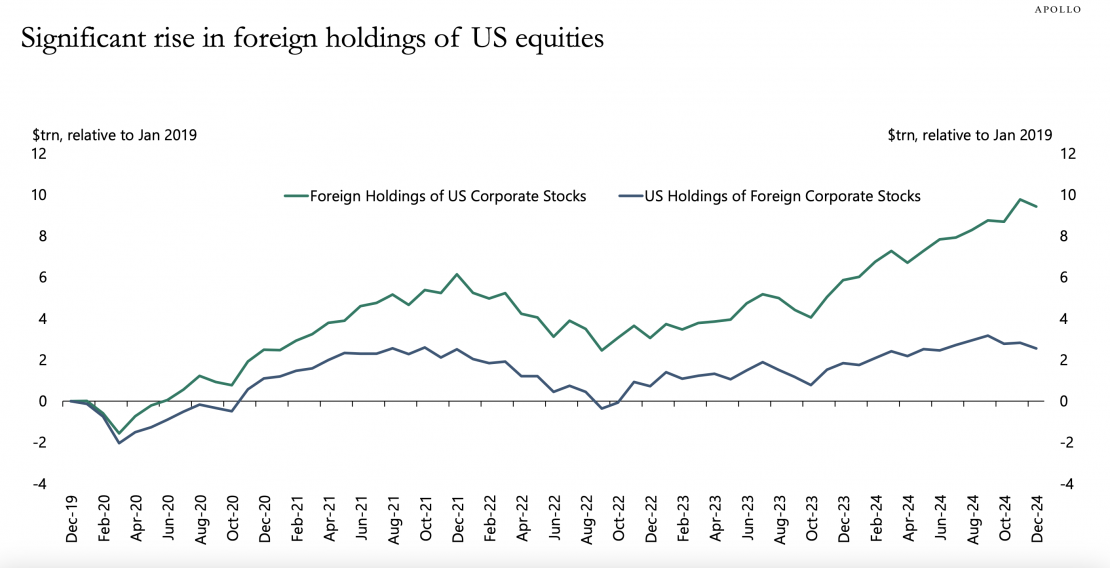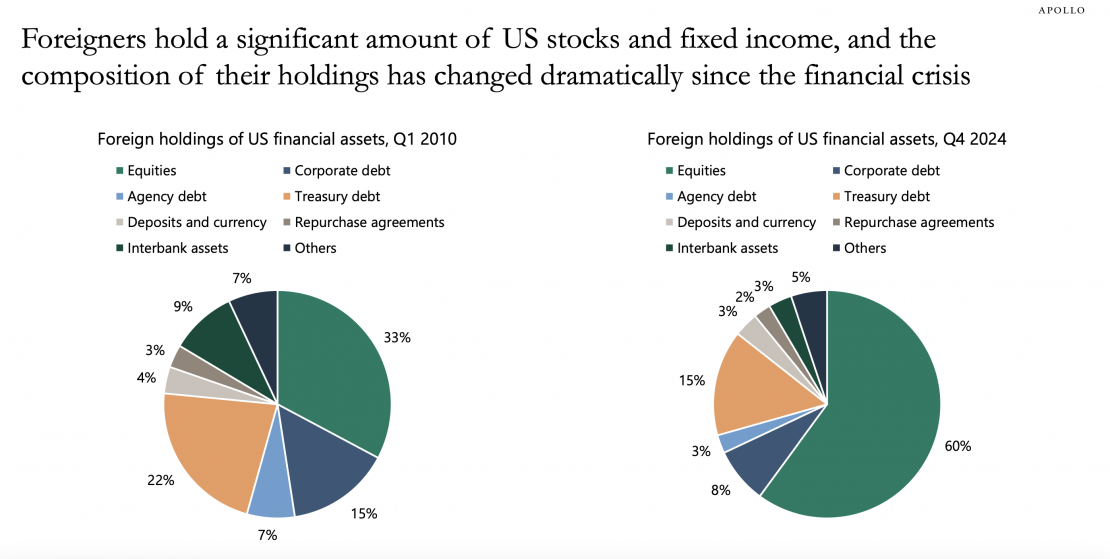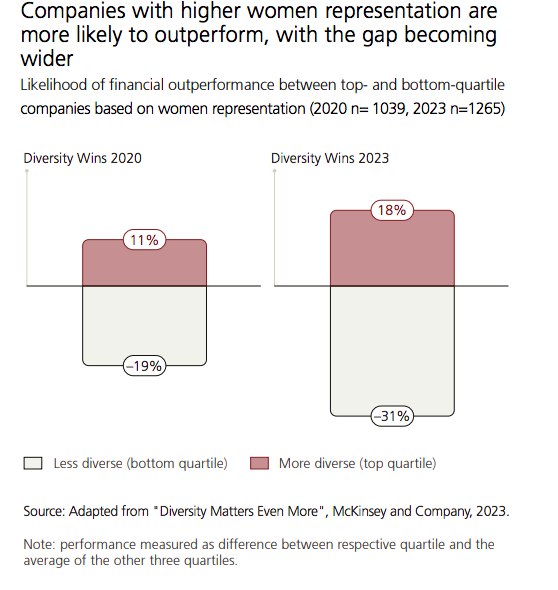The world’s major economies are making their move in response to the Trump administration’s tariff game. Meanwhile, markets are feeling the impact of commercial and geopolitical uncertainty, and investors are beginning to consider a scenario of economic recession in the U.S. alongside rising inflation. This heightened volatility translated into another turbulent session on Wall Street, with declines in the S&P and Nasdaq, as well as European stock markets falling for the fourth consecutive session (EuroStoxx 50 -1.4%; Ibex -1.5%).
“The fear of a U.S. economic recession and its spillover to the rest of the world, partly driven by Trump’s unstable trade policy in these early months of his term, is leading to profit-taking after an excellent start to the year for European stock markets,” explain analysts at Banca March.
According to Gilles Moëc, chief economist at AXA IM, “there is a revolutionary atmosphere in Europe.” He believes that “the reaction of EU institutions and national governments to the U.S. challenge has been quicker and stronger than expected.” He warns of two key issues: first, “whether national governments have the willingness and capacity, given already unstable fiscal positions and watchful markets”; second, “the magnitude of the multiplier effects that this additional spending will have on GDP, both in Europe and in Germany,” a country about which he notes, “the revolution could be relatively painless.”
Where Are We in This Tariff Game?
To summarize quickly, Trump has implemented 25% tariffs on all steel and aluminum imports, with Canada, Brazil, and Mexico being the most affected. Additionally, the U.S. president has threatened to double tariffs on Canadian steel and aluminum to 50%, in response to a 25% increase in the electricity price Ontario exports to the United States.
On the receiving end of these new tariffs, the latest response has come from the European Union. Ursula von der Leyen, president of the European Commission, has just announced countermeasures worth €26 billion, which will affect U.S. products such as textiles, appliances, and agricultural goods starting April 1. The European Commission “regrets the U.S. decision to impose such tariffs, which are unjustified and harmful to transatlantic trade, damaging businesses and consumers and often resulting in higher prices.” Brussels estimates that these tariffs on steel, aluminum, and derivative European products will have an impact of around $28 billion.
How Much and How the Landscape Has Changed
In response to this situation, international asset managers are adjusting their scenarios. According to Lizzy Galbraith, political economist at Aberdeen Investments, the rapid adoption of executive measures by President Trump, particularly in trade, has led them to update their outlooks from several important perspectives.
“We now see the U.S. weighted average tariff rate continuing to rise to 9.1%. We assume a reciprocal tariff will be implemented, though with several exemptions. We anticipate higher general tariffs on China and more sector-specific tariffs, including those applied to the EU, Canada, and Mexico. Additionally, the risk that trade policy becomes even more disruptive has increased,” she notes.
Galbraith acknowledges that their “Unleashed Trump” scenario assumes reciprocal tariffs are systematically applied and include non-tariff trade barriers, while the United States-Mexico-Canada Agreement (USMCA) collapses entirely. “This results in the average U.S. tariff reaching 22%, surpassing the highs of the 1930s,” she explains.
The Aberdeen Investments political economist believes that the economic fundamentals remain strong. However, she acknowledges that “our updated baseline political expectations, along with the risk bias in our forecasts, will present headwinds for U.S. economic growth and inflation.”
Finally, according to Enguerrand Artaz, strategist at La Financière de l’Echiquier (LFDE), part of the LBP AM group, “the market scenarios that prevailed at the beginning of the year have been erased.” Artaz explains that the U.S. exceptionalism that had been shining for the past two years—and that consensus expected to continue—is now faltering. “Weighed down by the collapse of the trade balance, driven in turn by a sharp increase in imports in anticipation of tariff hikes, U.S. growth is expected to slow significantly, at least in the first quarter. On the other hand, Europe, a region in which very few investors had any hope at the start of the year, has returned to center stage.”
Implications for Investments
Given this backdrop, Amundi‘s latest Investment Talks report states that “the Trump trades are over, and the market rotation away from major U.S. tech stocks continues.” They explain that despite the recent sell-off, they believe the expected correction in excessively valued areas of the U.S. equity market could continue, leading to further rotation in favor of Europe and China.
“In fixed income, it is crucial to maintain an active duration approach. Since the beginning of the year, we first became more bullish on European duration, and more recently, we have started moving toward neutrality. We have also shifted to a neutral stance on U.S. duration and expect the U.S. 2-10 year yield curve to steepen. Regarding credit, we remain cautious on U.S. high-yield bonds and prefer investment-grade European credit. As our original euro/dollar target of 1.10 approaches, we expect volatility to remain high and believe there is still room for further dollar correction. Overall, we believe it is essential to maintain a balanced and diversified allocation that includes gold and hedges to counter the increasing downside risk in equities,” Amundi analysts state.
Meanwhile, BlackRock Investment Institute highlights that political uncertainty and rising bond yields pose risks to growth and equities in the short term. “We see further upward pressure on European and U.S. yields due to persistent inflation and rising debt levels, although lower U.S. yields suggest markets expect the typical Federal Reserve response to a slowdown. However, we believe that megatrends like artificial intelligence (AI) could offset these drags on equities, which is why we remain positive over a six- to twelve-month horizon,” they indicate in their weekly report.













